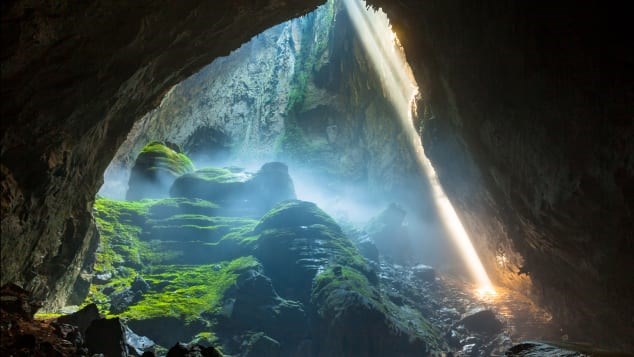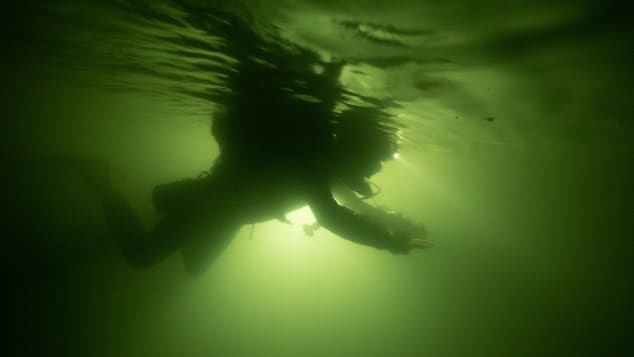
Son Doong cave is one of the world’s most precious natural wonders (Source: CNN Travel)
Last month, a trio of British divers ventured to the world natural heritage site of Phong Nha-Ke Bang National Park in Quang Binh to explore the cave’s waterways.
During the groundbreaking dive, they discovered a new underwater tunnel that connects Son Doong (meaning “Mountain River Cave”) with another enormous cave called Hang Thung.
Son Doong currently measures a total of 38.5 million cu.m. When it’s officially connected with Thung Cave, it will add an additional 1.6 million cu.m in volume.
“It would be like someone found a lump on top of Mount Everest, making it another 1,000 m higher,” according to Howard Limbert, technical advisor of the Quang Binh-based Oxalis adventure tour company.
He told CNN Travel that any cave in the world will be able to fit comfortably inside Son Doong when it’s connected.
“It’s just outrageous in size,” he said.
Oxalis, the only company licensed to bring travellers into Son Doong Cave, invited the British divers who aided in the rescue of the trapped football team in Thailand in 2018 to visit the cave following the rescue expedition.
“The divers did an amazing job rescuing the children in Thailand. We invited them on a trip to Son Doong to thank them for their great effort,” Limbert said.
“They wanted to do something interesting during the trip, so we came up with this idea of diving Son Doong, which had never been done before.”
Limbert said the Oxalis team already knew that the water from Son Doong joined Thung Cave, through dye-testing, but no human has ever gone into these subterranean rivers.

During the mission, divers were able to reach a depth of about 78 meters while diving on air (oxygen and nitrogen).
(Photo courtesy Oxalis Adventure)
“When the divers reached 78 m, they plumbed the depths below using a line and a lead weight. Hence, they believe the offshoot reaches a depth of 120 m and continues for about 1 km,” he explained.
The team wasn’t expecting the tunnels to be so deep, because the other caves in the area are quite shallow.
“Now that we know how deep it is, we’ll bring the special gases with us next time to enable long, deep dives,” Limbert told CNN Travel.
The divers plan to return again in April next year, which is the best time of year to dive, as water levels are relatively low and visibility is better than usual.
“I think it’s incredible that something as important as the world’s largest cave is still being explored and better understood,” said Limbert.
“No one had ever set foot inside Son Doong until 2009 and this latest discovery shows there are still an awful lot of things to uncover on this planet. It’s really exciting,” he added.
One of the world’s most precious natural wonders, Son Doong was inadvertently discovered by Vietnamese resident Ho Khanh in 1990.
“While hunting in the jungle, Khanh came across the opening. He felt a blast of wind and heard the rush of a river inside... But after he left, he couldn’t find it again because it’s surrounded by foliage,” said Limbert, who was part of the British Cave Research Association (BCRA) team that first set foot inside Son Doong.
“Khanh spent many, many years trying to rediscover the mouth of this cave and, finally, in 2009, he led us there. We realised right away that it was major.”
After the BCRA explored and measured the cave, they proclaimed it the largest in the world in 2010 – so big that a New York City block with 40-storey skyscrapers could be fit inside it, according to Oxalis’s estimations.
Within the immense limestone cavern, there are various microclimates and diverse scenery, including two jungles where sunlight streams in.
“So far we’ve only explored about 30 percent of Phong Nha-Ke Bang National Park, so there’s a lot more to be discovered,” said Limbert.